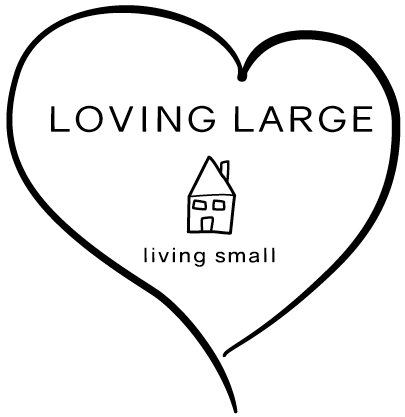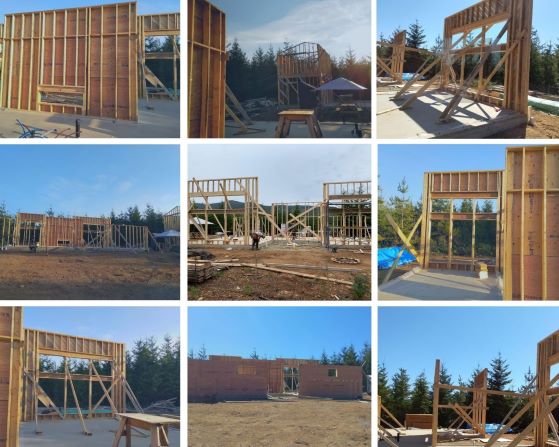I have always had the ability to envision, to form a mental picture including size, texture, and colour. It’s been helpful as an event planner to be able to view an empty space and see what’s happening there; the band on stage, fully dressed dining tables, the flow of guests at the buffet, the lighting, a completely decorated room.
Even with the architectural drawings and a concrete slab with colourfully chalked rooms, a finished house has been somewhat harder to imagine; waking up to the view, showering outdoors, eating breakfast at the kitchen island. Now that walls have arrived, my senses are in overdrive, in a good way!
What a frame does is it defines the container in which everything finds its place or attempts to fit within imposed boundaries. It outlines the edges from which we can then find our central focus. For me it has helped my mind’s eye place furniture as well as place us in our new life. Like a camera that captures the present moment, I am able to see us at home, dining outdoors, resting indoors, and moving from room to room. I can sense a measured approach to living, imagine a slower pace of doing, smell the conifers ouside our bedroom windows.
That ability to envision along with the plan’s proposed measurements has allowed us to better design the spaces that we will soon find ourselves in; to place furniture, to organize function, and to imagine the flow of life there.
With our space being limited and becoming more defined each day, we are now able to design with intention what we will bring into our new home. We can determine what won’t fit the spaces and what won’t fit our lifestyle. Working with this frame of reference allows us to clearly design a way of living that allows for movement and flow as well as fixed forms and distinct function; and as is often in art and advertising, white space is key.
So our earliest discussions around design now become decisions around what’s pragmatic; what goes and what stays, what’s really needed and what’s mostly wanted, what’s of value, and what still brings us joy. By the time we pack up, we hope to have a clearly defined plan as well as a very limited number of items to shift from one house to another. And because we have our eyes set on the future, we are designing with the end in view. Not only have our needs changed, our numbers have changed. When we moved into our current home, we were seven. When we move into our new house, we will be two, and with a much smaller footprint.
So as we begin to walk the chalk edged rooms, we anticipate what will fit within the lines, and not only how the house frames the spaces, but how our home will frame the next part of our journey.

